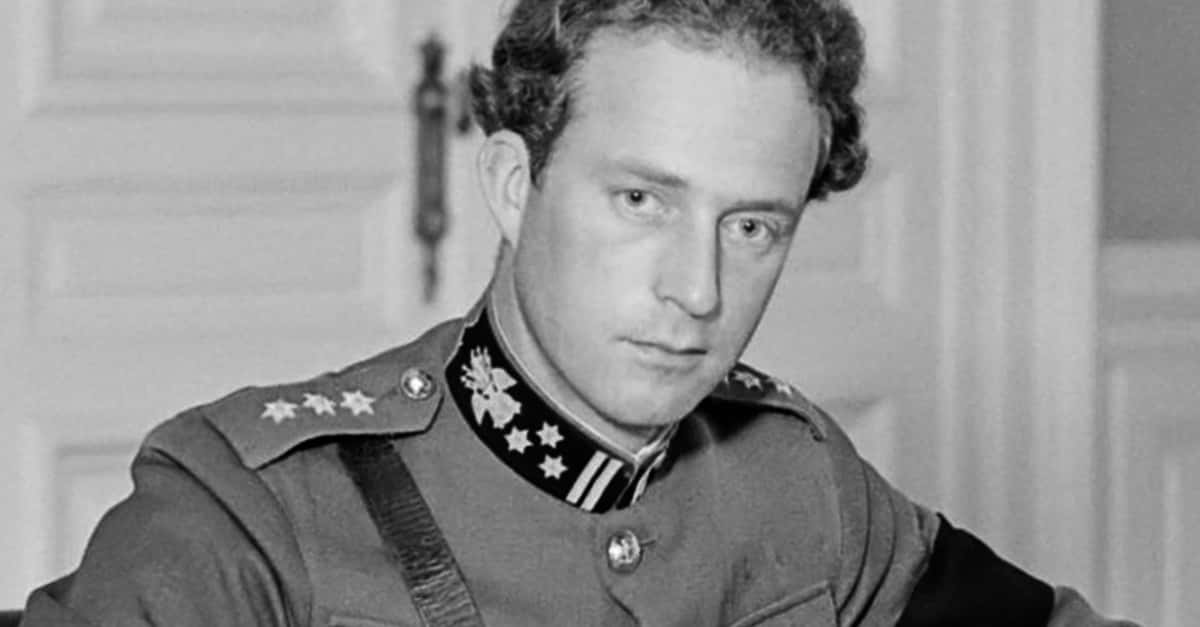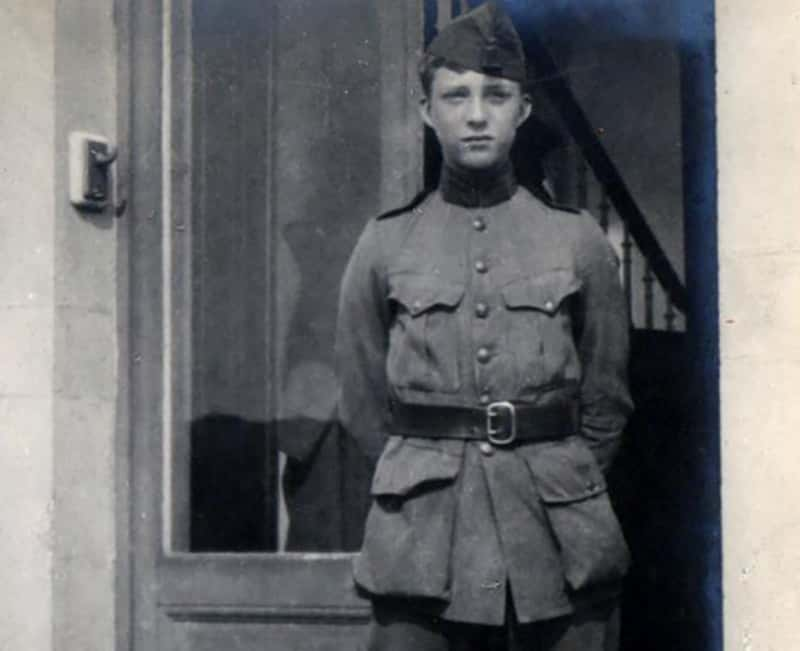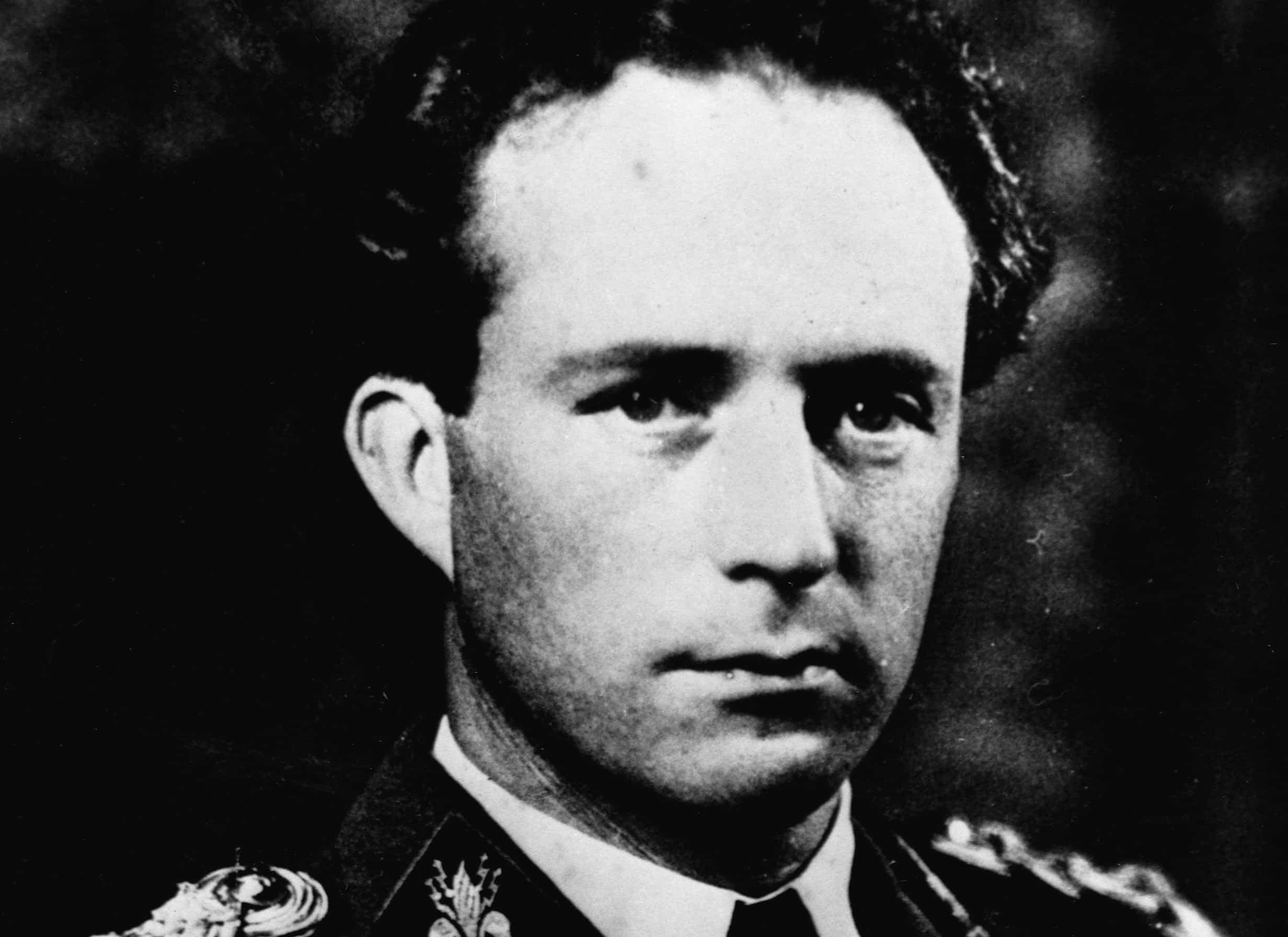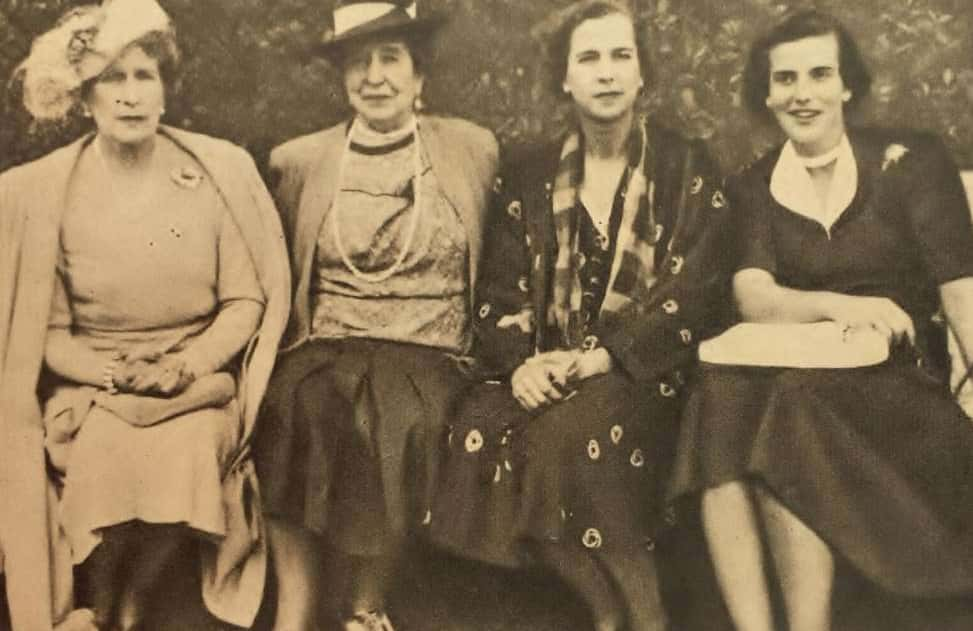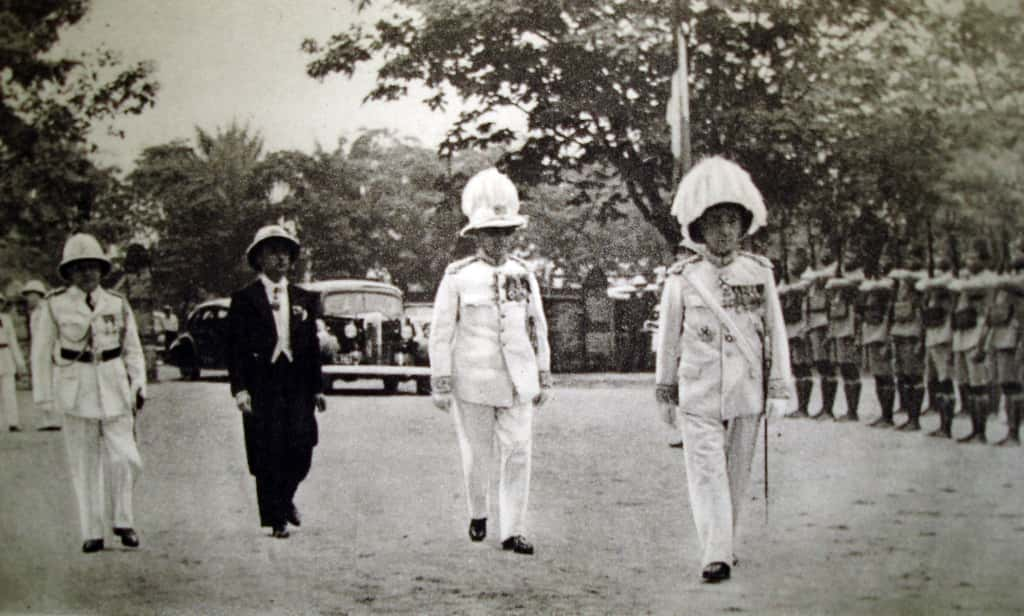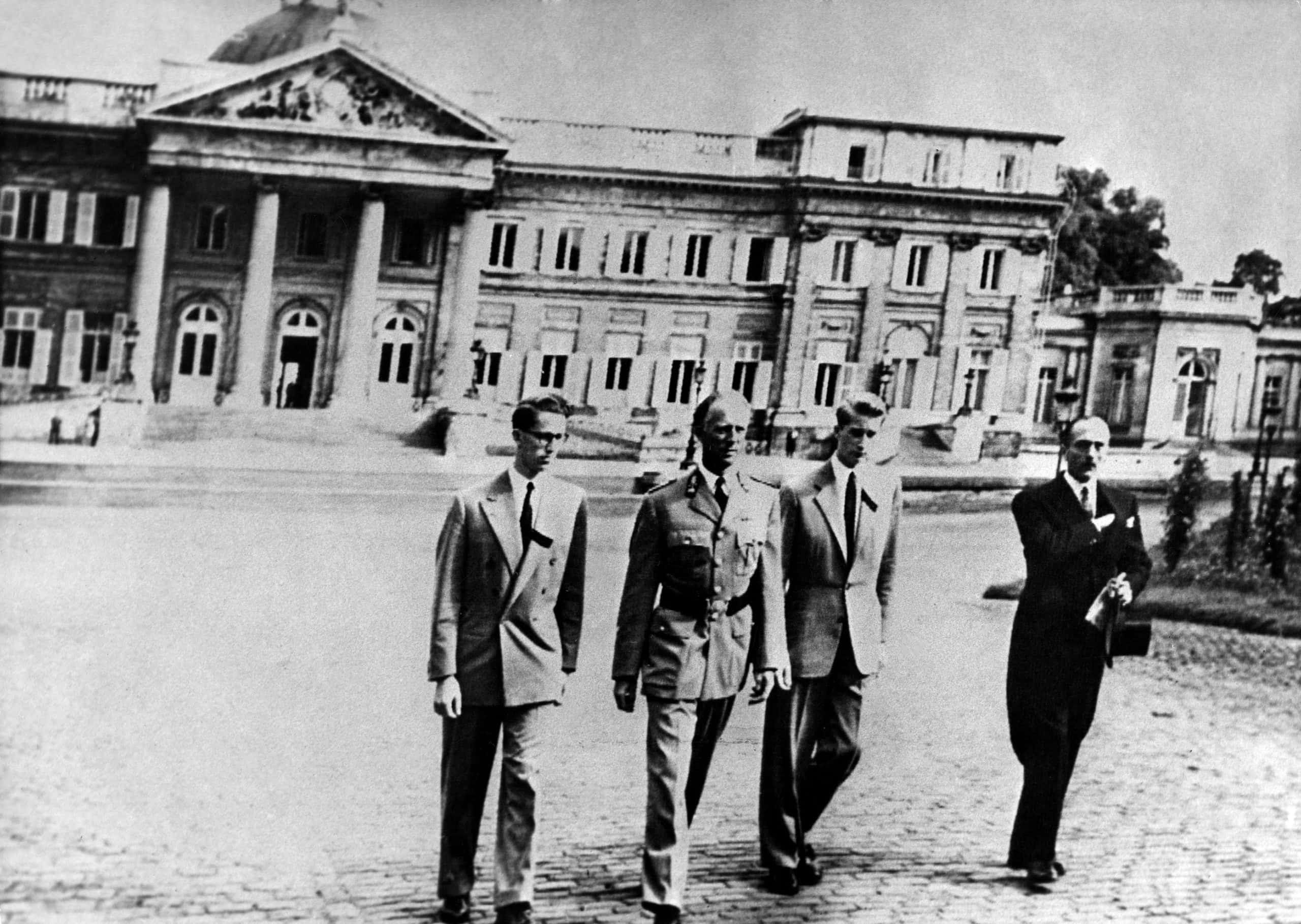Leopold III came to power during a horrifying time in Europe. He became the King of the Belgians just as an ominous and terrifying power was rising in Germany. The problem was, Leopold seemed to have a hidden agenda. But it was so hidden, that it was impossible to know whose side this secretive king was actually on—until it was far too late.
1. He Was Destined For Power
On November 3, 1901, Prince Leopold was born into a pretty cozy situation. In fact, as the son of Belgium’s royal heir, he was already destined to wield great power. However, nobody could foresee the dangers that lay in wait for the young prince. With these great odds of success, you have to wonder how it all went so wrong.
2. Danger Darkened His Doorstep
As expected, in 1909, Leopold’s father became King Albert. Of course, eight-year-old Leopold also got a boost: He was now the Duke of Brabant. Everything was going swimmingly until the summer of 1914. Disaster struck when the Germans invaded Belgium. Instead of wanting to protect their young son, Leopold’s father made a shocking decision.
3. He Was Too Young To Fight
King Albert allowed 12-year-old Leopold to play soldier and join the Belgian army, that is, until the situation took a startlingly dark turn. By 1915, Belgium was crawling with Germans. The King wisely pulled his son out of the army and placed him in Eton College in England. Leopold stayed safely secured at school while his father bravely fought the Germans in France.
It was touch and go there for a while. Would his father survive? If he didn’t, what would happen to Leopold?
4. He Had To Find A Wife
Luckily, the grim reaper spared Leopold’s family…at least, for now. After Germany lost WWI, the prince, along with the rest of Europe, tried to return to normal life as best they could. With the future looking more secure, it was time for him to find a wife. And, as fate would have it, there was an eligible princess waiting in the wings. But there was only one problem.
5. He Was Her First Choice
Princess Astrid of Sweden seemed like the perfect match for Leopold, but there was an intimidating competition for her hand in marriage. Many other young royals were possible suitors, but in the end, Astrid gave her whole heart to Leopold. However, as joyous as this impending union undoubtedly was, it likely sealed the princess’ chilling fate.
6. He Multiplied
Leopold and Astrid married in Sweden on November 4, 1926, oblivious to the sorrow ahead. Almost immediately, they got down to business: It was time to produce some proper heirs. The very next year, Princess Josephine-Charlotte came into their lives—just 11 months after the wedding. But just as Leopold was settling into married life, an unforeseen tragedy turned his life upside-down.
7. His Father Mysteriously Disappeared
Leopold’s father, an ardent mountain climber, made a dire mistake. He went on an expedition by himself. He was climbing in the mountains in Belgium and, well…he perished mysteriously. Because he was climbing alone, no one really knows what happened. In fact, some even suspect that he met with foul play. One thing, however, was clear: Leopold, at the young age of 33, was now the King of the Belgians.
8. He Couldn’t Have Any More Children
Once Leopold took on this intimidating responsibility, he continued to grow his family. Two more children followed Princess Josephine-Charlotte. But after that, he stopped having children—and for a heartbreaking reason. In August of 1935, just a year after their third child was born, Leopold and Astrid were on a drive through the countryside in Switzerland.
The road was particularly curvy, and at one turn, Leopold didn’t quite manage to make the curve…
9. He Lost Control
To his horror, the car Leopold was driving veered off the road, and although Leopold tried to control it, it crashed into the depths of Lake Lucerne. There was a harrowing battle for life: one which Leopold won and Astrid, sadly, did not. Leopold now had three children under the age of 10 and no wife. Well, these family troubles would soon seem small in comparison to what came next.

History's most fascinating stories and darkest secrets, delivered to your inbox daily.
10. He Was Afraid
Along with Leopold’s personal tragedies, the 1930s was not the most stable time for Belgium. Between 1934 and 1940 there was non-stop government turbulence and Leopold saw nine different governments come into power in his country. Leopold looked around the continent and observed something frightening: an increase in dictatorships.
With no faith in parliament, he came to believe that only he could stop Belgium from falling to a dictator…Sadly, this would only lead to his downfall.
11. His Old Enemy Resurfaced
In 1939, the enemy from Leopold’s childhood, Germany, reared its head in a terrible way. This time, Germany joined forces with Italy and Japan, creating the Axis powers. They planned to change the world forever—and not for the better. To fight against the Axis, some other European countries formed the Allies, and they desperately needed Belgium to sign up.
Leopold, however, wasn’t so sure.
12. He Made A Huge Mistake
Leopold decided against joining the Allies. He and his government had confidence in their own ability to keep the Axis powers out of Belgium. Well, as it turned out, their confidence had no place in reality. In 1940, the Axis invaded Belgium, and on the first day, they brutally took Belgium’s strongest point. Leopold had made the worst choice possible—and now his country was going to pay for it.
13. He Gave It All Up
Even though Leopold hadn’t joined the Allies, French and British fighters hurried to save Belgium. It was a race against time, and, unfortunately, they lost it. Belgian, French, and British fighters battled it out with the Axis—but failed horribly. Leopold felt he had no choice: He gave up his country to the Axis. The defeat floored the king. What’s more?
It also made him make a very peculiar decision.
14. He Wanted To Share Their Fate
Most royal leaders—upon losing their country to an invading power—would take the opportunity to get the heck out of there as soon as possible. Not Leopold. He said he wanted to stay and face the same fate as his servicemen and the people of Belgium. Additionally, he also wanted to make sure Belgium continued to function as a country, especially concerning the economy.
Leopold feared there would be food shortages, and he wanted to stop that. He famously said: “Whatever may come, my fate will be yours”. But not everybody agreed with him.
15. He Refused To Leave
By staying in Belgium, Leopold seemed to be doing the most honorable thing. The Prime Minister of Belgium, however, wasn’t on board. First of all, Hubert Pierlot thought that Leopold could do more good working with the Allies from outside of occupied Belgium. When he insisted that Leopold leave Belgium—and again Leopold refused—Pierlot began to smell a rat.
16. He Had A Secret
Pierlot thought Leopold’s refusal to leave the invaded Belgium sounded fishy. He suspected something horrible: that Leopold would secretly join the Axis and take the country over to the enemy. If Leopold did this, he’d be committing treason. When the Axis forces finally came in to take over the country, Leopold decided that surrendering was his only option.
On May 27, 1940, Leopold officially surrendered to the Axis. The world's reaction to this decision was absolutely ruthless.
17. They Hated Him
It didn't take long for Leopold’s reputation to take a severe nose dive. Members of the British press called him the “Traitor King” or perhaps even worse, “The King Rat”. A statue of Leopold’s father in Paris had a sign attached to it that called Leopold "your unworthy successor". In one edition of the Daily Mirror, they accompanied his image with this headline: "The Face That Every Woman Now Despises".
As we’ll soon see, however, not every woman despised him.
18. He Got Called Out
Leopold’s decision to surrender was awful for Belgium, but it was a horror for others. British Prime Minister, Winston Churchill, laid out his opinion in no uncertain terms. He said that Leopold gave them no warning about his decision, and it meant that his army was left completely exposed and with absolutely no means of retreat.
It was a stunning accusation, and Leopold couldn’t do much to refute it. Other reactions, however, were even more disturbing.
19. He Went Ballistic
Pierlot, the Prime Minister of Belgium, when he heard of Leopold’s surrender, went ballistic. He took to the radio and told the people of Belgium that the King was acting on his own—that he hadn’t received any advice from his ministers and was therefore breaking the constitution. After all, Pierlot had a traitorous plan. He wanted to remove Leopold from his position as King.
And he knew exactly how to do it.
20. They Couldn’t Stop Him
To remove Leopold from his duties, Pierlot had to assign a replacement King—a regent. To do this, Pierlot had to gather the Belgian senate, known as “summoning the Chambers”. However, with the busy state of affairs, summoning the Chambers was all but an impossibility. This worked in Leopold's favor, and definitely not in Pierlot's.
The Prime Minister couldn’t topple Leopold from his throne and—in Pierlot’s eyes anyway—that meant losing his country to the Germans.
21. He Watched Them Flee
After Leopold surrendered, the ministers of his government fled to France. In June of 1940, France had also fallen to the Germans and those ministers wanted out. The ministers asked Leopold if they could return to Belgium, where Leopold and Lilian were still living under house arrest. The ministers wanted to form a new government with Leopold, and they asked him to let them do it.
Leopold’s response, however, shook them to their core.
22. He Rejected Them
Leopold couldn’t forget how his ministers had treated him. They’d accused him of treason and he wasn't about to let that go so easily. He finally gave them his answer, and it was harsh: The ministers were not welcome back in Belgium. Leopold had spoken, and so his ministers were scrambling for a country to escape to. They eventually chose Britain and by the time they got there, it looked like the Allies were going to win.
This was a more-than-awkward situation. While Belgium's government took refuge in an Allied country, their king was still in bed with the Axis powers.
23. He Demanded A Meeting
The rumors were out there that Leopold was cooperating with the Germans—but, in fact, he was doing the opposite. He refused to follow the Germans' rules when it came to governing Belgium. He demanded to talk to the head of Germany—their fuhrer—about Belgian prisoners the Germans held and about making Belgium independent again.
Leopold met with the German leader, but the fuhrer refused to make a statement about either of these issues. Strangely, this was a blessing in disguise for Leopold.
24. The Fuhrer Saved Him
Because the German fuhrer remained tight-lipped about his meeting with Leopold, it looked less and less like Leopold was cooperating with him and the Axis. This did wonders for the king’s popularity. At least the public didn’t think he was collaborating with what most people considered to be evil incarnate. The public was once again on Leopold’s side—so why did he seem intent on making them mad again?
During all this chaos, Leopold had time for something usually put aside during a crisis: romance.
25. He Had A Special Visitor
In 1941, Leopold was a prisoner of war in his own country. The Germans were holding him under house arrest at Laeken Castle. Bizarrely, his mother saw this as a time for entertaining. She invited family friend Lilian Baels to visit—but she had a secret agenda. Mom was hoping for a romance between her son and Lilian. Leopold and Lilian had met before, but now—to mom’s utter delight—their friendship was beginning to blossom into something more.
One visit turned into several, and soon, Leopold and Lilian were madly in love.
26. He Wanted A Wife
It had been six years since his wife had passed, and Leopold was likely lonely. I'm sure being confined to his home didn’t help matters either. Leopold eventually got down on a knee, proposed to Lilian, and nervously waited for her reply. What could Lilian say? I mean, his offer wasn't exactly every girl's idea of "happily ever after". A life under house arrest under a brutal regime? No thank you.
Not surprisingly, Lilian said no. But it wasn’t for the reason you might think.
27. She Said No
Lilian said no to Leopold’s offer of marriage for a simple reason: She wasn’t a princess. In her mind, kings only marry other royalty, and she certainly wasn’t that. Leopold’s mother stepped in and tried to convince her. After much persuasion, his mother finally got Lilian to agree. The bride-to-be, however, had a surprising—and rather bizarre—condition: She wouldn’t let anyone call her queen.
28. They Broke A Rule
Leopold and Lilian were in a hurry to make their relationship official—but weren't in any rush to tell anyone about it. On September 11, 1941, they tied the knot. However, there were two problems with this. First, they did it in secret, and second, they broke Belgian rule. The strict rules were: civil service first, then the religious.
By plunging down the religious route first, Leopold landed himself in a heap of trouble.
29. They Had A Plan
You might give Leopold a certain amount of slack for breaking the rules. I mean, it was during WWII, and maybe, to some, it seemed like the end of the world. After all, the couple did plan to have their very public civil ceremony as soon as this international skirmish resolved itself. Then Belgians would be able to properly welcome their king’s new bride.
That’s when a doctor’s announcement threw a monkey wrench into their plans.
30. He Kept A Secret
A few months after the religious ceremony, Lilian’s doctor made a stunning announcement: She was carrying a child. This meant that they couldn’t delay the civil ceremony until after WWII. So the civil ceremony also had to fly under the radar, which it did on December 6, 1941. This was highly unusual. Belgium’s king had a new wife, and no one in the country knew about it.
31. They Told The Truth
In December 1941, even though WWII wasn’t yet over, it seemed time to tell the people of Belgium about their king’s secret marriage. They did it via a letter that the public heard read aloud in churches. To say the citizens of Belgium got a shock is an understatement. To say they agreed on how to react is just plain untrue.
32. They Blamed Them
A small portion of the population understood Leopold and Princess Lilian's choice and even wished them well. But not everyone was so forgiving. The rest of the people just didn't agree on which of the couple's sins was the worst. Was it the fact that they had ignored a key Belgian rule? Or was it that Leopold had claimed to be staying in Belgium to face the same fate as his army—but had had a wedding instead. Oh, but that wasn't all.
There was yet another sin, and it was more about Lilian than Leopold.
33. They Called Her Names
Many Belgians meanly questioned Leopold’s choice of bride. As Lilian had pointed out before she’d accepted Leopold’s offer, she didn't consider herself a royal. That, in itself, was unusual. Some citizens labeled Lilian a social climber—but that wasn't even the worst insult. Some even went so far as to call Lilian's presence a betrayal of their much admired Queen Astrid.
34. He Was Their Scapegoat
If the Belgians weren’t already angry enough at Leopold, they were about to get angrier. The general public blamed Leopold for the German presence in their country. With the Germans in Belgium, food was scarce—but to add insult to injury, there was also forced labor. Yes, the Germans were putting average citizens to work, and most people thought Leopold was the one to blame.
35. He Fell Prey To A Faulty Plan
In spite of Leopold’s controversial marriage–and general unpopularity– the ministers of the government still wanted to reconcile with him. At this point, the ministers were still in London and the king and his wife were still under house arrest in Belgium. The ministers decided to send the prime minister's son-in-law with a letter to try and reason with Leopold.
In January 1944, Pierlot’s son-in-law set out to deliver the letter personally. Which, in hindsight anyway, seems like a very bad idea.
36. He Never Got The Letter
You can imagine that traveling through Europe during this unprecedented time was more than a little dangerous. At some point on his route from London to Belgium, Pierlot’s son-in-law met up with the Germans and they took his life. This messed everything up. Leopold had no idea that he missed a letter of reconciliation, and the ministers had no idea that he hadn’t got it.
With no news from the government, Leopold wrote his Political Testament—and it was a doozy.
37. He Was Very Negative
Leopold couldn’t have packed more negativity into a letter if he’d tried. First of all, he said that Allied forces, who were likely going to rescue him from his house arrest, were more like an invasion than a rescue. He said that he wanted to fire all his ministers who were in exile, as well as dissolve all the treaties they had established. But the cherry on top?
Leopold failed to mention anything about the Belgian resistance who had risked their lives for their country. Worse still, the letter also made an enemy of a country that had a chance of ending WWII: the United States.
38. They Needed Him
The United States had a plan to end WWII and it involved Belgium. You see, the Belgian Congo had vast supplies of uranium and the Belgian ministers in London had promised it to the US so they could create a nuclear weapon that would end the conflict for good. Leopold’s testament threatened this entire plan. And? It cast him as the villain.
Because Leopold had dissolved all treaties with other countries, it looked like the US wouldn’t get the uranium it needed to end WWII.
39. He Moved To A Scary Place
The Allies began to threaten the Axis, so the Germans no longer felt safe holding Leopold and his family under house arrest in Belgium. This led to an ominous demand from the Germans. They said that the royal family would now serve their time, not in the comfort of their own country, but in Germany. The Germans had SS officers bring the family to Hirchstien where they would live, not in a palace, but in a fort.
Suddenly, Leopold had a new threat to fear. There were 70 SS guards watching his family’s every move.
40. He Faced Harsh Conditions
Leopold's life in Belgium had been fairly easy, despite political unrest. However, these new conditions were a vicious contrast. They didn’t get enough food to eat, and what they did have was poor quality. Worse still, they lived in constant fear. The Allies were getting closer to liberating Belgium, and Leopold was certain that the SS would execute the entire family as a form of revenge.
41. He Almost Fell For It
In response to the poor diet that the Germans were handing out to Leopold and his family, one of the members of the SS offered the family some vitamins in order to make up for the lack of nutritional food. Leopold and Lilian looked at the pills with suspicion. They had a risky decision to make: Either take the vitamins and maybe improve their health or toss them away.
They chose to throw the pills out...It ended up being the right thing to do: The pills were cyanide.
42. He Survived
Leopold and his family lived in Germany—and later Austria—as prisoners. However, in May 1944, after almost a year in captivity, salvation finally came calling. The US 106th Cavalry Group liberated them from this perilous position. It was a momentous occasion, and Leopold was beyond happy to be free. Sadly, his problems were far from over.
43. He Couldn’t Go Home
The way Leopold had acted during WWII left his reputation shattered beyond repair. Some believed that Leopold’s surrender to the Germans was a betrayal of the Allies. They also thought that it was likely he had worked with Germany while they occupied Belgium. He was so routinely despised that Leopold wasn’t welcome back in his own country. Instead, he and his family went to Switzerland.
In his place, Leopold’s brother stepped in as a temporary king. The government had to decide what to do with Leopold, so they left his fate up to the results of an inquiry.
44. He Was The Harbinger Of Chaos
One area of Belgium, Wallonia, had serious problems with Leopold. The government had concerns that there would be rioting if Leopold returned to his royal position. But something else also worried them: There was a significant shortage of law enforcement officers. Because of this, keeping any rioting under control would be impossible.
The government concluded that if Leopold got permission to return, there would be chaos in Belgium.
45. He Faced One More Obstacle
By 1946, the commission—the one that was set up to decide what to do with Leopold—announced its dramatic conclusion. They decided that Leopold was completely exonerated of all charges. The decision overjoyed Leopold and his family, and they prepared to finally return to their homeland. Not so fast Leopold. The government cruelly decided to ask the people of Belgium what they thought about having their king back.
Again, Leopold and his family, now desperate to go home, waited for a response.
46. He Made A Bloody Return
The referendum, which got the name “The Royal Question,” was a tight race. Just 57% of voters wanted Leopold back in Belgium and back on the throne. Now the royal family could finally return to their home country. With 43% of the people against them, however, what kind of reception would they get? Well, let’s call his reception what it’s called in history books: the General Strike of 1950.
It was a violent affair and three protesters lost their lives.
47. He Couldn't Give It Up
Wallonia, the part of Belgium that was most opposed to Leopold, threatened to separate from the rest of the country. Leopold had yet another difficult decision to make: stay on as king and risk his country tearing itself apart, or abdicate the throne. Leopold still loved Belgium, so he did what he thought was best...He abdicated and let his son step in as King.
With that decision, his days as king of the Belgians were finally over. Or were they?
48. He Kept His Control
When Leopold’s son, now called King Baudouin, moved into the royal residence, he found he had a roommate—his father. Dad wanted to stay close to his son, the king, and for a suspicious reason. As it turned out, Leopold wasn’t ready to let go of running the country just yet. So, he simply placed himself right next to King Baudouin.
Some people criticized Leopold for this, but he wasn’t budging, at least, not until 1960. That's when his son found a wife, and together, they kicked him out of the house for good.
49. He Had Other Interests
Once Leopold was through with trying to run his country, he had time for other pursuits. Leopold loved insects and finally had time to pursue this interest. He traveled the world collecting specimens and, because of his interest in animals, the scientific community gave him an honor—actually two. They named two species of reptiles after him: Gehyra leopoldi and Polemon leopoldi.
50. He Had An Emergency
In 1983, at the age of 82, Leopold had to have emergency heart surgery and, sadly, didn’t pull through. They buried him next to his first wife, Queen Astrid. Leopold’s second wife, Princess Lilian passed almost 20 years later. She’d never thought of herself as a queen and asked for her final resting place to be in a regular cemetery—not a royal one.
Or course, nobody listened to her last request, and they buried her with Queen Astir and Leopold.

